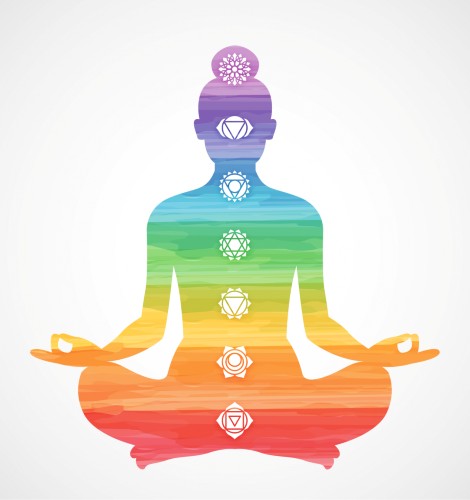- Main Page
- A1C Test
- Advance Directives
- Age on other Planets
- Aliens
- American Flag
- Angels
- Annuals
- Anxiety
- Aortic Aneurysm
- Apple Cider Vinegar
- Aphrodisiacs
- Arrhythmia
- Atrial Fibrillation
- Auras
- Avoiding Scams
- Awareness Ribbons
- Baileys Liqueur
- Bananas
- Banana Tree, Grand Nain
- Banana Tree, Ice Cream
- Banana Tree, Zebrina Rojo
- Beekeeping
- Benign P P Vertigo
- Birth Month
- Blood Tests
- Blood Test Tubes
- Blood Types
- Body Mass Index - BMI
- BMI Calculator
- Boogaloo
- Bookmarks
- Book of Shadows
- Book List
- Boot Anatomy
- Boot Fit Guide - Cowboy
- Boot Glossary
- Boot Leathers
- Boot Makers
- Boot Retailers
- Boot Styles - Western
- Boot Toes & Heels - Western
- Boot Toes & Heels - Work
- Bronchitis
- Bullying
- Candle Colors
- Carbohydrates
- Cardiac Catheterization
- Cardiovascular Disease
- Cats
- CGM's
- Chakras
- Chillicothe Businesses
- Chinese Zodiac
- Cholesterol
- Christmas Tree
- Ciroc Vodka
- Citalopram
- Coffee Pods
- Color Codes Chart
- Consumer Resources
- Consumer Resources - Elders
- C.O.P.D.
- Coronary Artery Disease
- Country Stars
- Cowboy Hats
- Cowboy Hat Etiquette
- Cowboy Hat Sizing
- Cowboy Sites
- C.P.A.P.
- Craft Name!
- Credit Score Checkers
- Credit Scores
- Crystals & Gems
- CT scan
- Degenerative Disc Disease
- Deities
- Depression
- Diabetes Info.
- Diabetes Facts
- Diabetes - Pre
- Diabetes - Type 1
- Diabetes - Type 2
- Diabetes - Type 3c
- Diabetes - Gestational
- Diabetes Care
- Diabetes Care Team
- Diabetes Terms
- Diabetes Treatment
- Diabetes & Fruits
- Diabetes & Veg's
- Diet - Boiled Egg
- Diet - DASH
- Diet - Fat Burning
- Diet - Mediterranean
- Diet - Military
- Disability
- Disability Permits
- Disaronno Amaretto
- Do Not Resuscitate
- Donation
- Dream Catchers
- Dreams
- Drug Test
- Dupixent®
- Echocardiogram
- Electrocardiogram
- Electromyography
- Elementals
- Elements
- Emphysema
- Epsom Salt
- Eye Teasers
- Facet Arthropathy
- Fairies
- Fairies of Folklore
- Farxiga®
- Flower Astrology
- Fonts
- Foods To Regrow
- Fortune Teller
- Free For All Links
- Friend
- Funny Things
- Fun Stuff
- Gabapentin
- GERD
- Giving
- Glycemic Index
- Gout
- Growing Blueberries
- Halloween
- Halloween Treats
- Headaches
- Healing & Energy Work
- Health Facts
- Health Info. Lines
- Heart Attack
- Heart Disease - Other
- Heart Failure
- Heart Imaging Tests
- Hello!!
- Herbal Codes
- Herbal Medicine
- Herb & Oils Uses
- Herniated disc
- HIPAA
- Home Bar
- Home Remedies
- Horse Sites
- House Plants
- Humalog®
- Hunger Facts
- Hydrogen Peroxide
- Hyperglycemia
- Hypoglycemia
- Hyperkalemia
- Hypokalemia
- Hyperlipidemia
- Hypertension
- Hypotension
- Important Numbers
- Indomethacin
- Informed Consent
- Inhalers
- Insomnia
- Insulin
- Interesting Facts
- Juice Fasting
- Juice Recipes
- Karma
- Kidney Cysts
- Kidney Disease
- Kinds of Tea
- Lantus®
- Lemon Benefits
- Lime Benefits
- Logger vs Lineman
- Lucky Bamboo
- Lumbar Retrolisthesis
- Macaroni!!
- Magic 8 Ball
- Magick
- Medicaid
- Medicare
- Melatonin
- Men's Health
- Mental Health
- Mirror Messages
- Missouri
- Missouri Prisons
- MO HealthNet
- Moon Phases
- Mounjaro®
- MRI Scan
- Muses
- Myelography
- Mystical Unicorn
- Naproxen
- Nasal Polyps
- Natal Astrology Chart
- National Foundations
- Need a Spell?
- Never Forget
- New Page Soon
- Nuclear Medicine
- Nutrition - Adults
- Nutrition - Adults, Older
- Nutrition - Kids
- Obesity
- One Little Rose
- Orchid Growing
- Orchid Sources
- Otolaryngologist
- Ouija
- Oxycodone-Acetaminophen
- Pagan Humor
- Pagans vs.Wiccans
- Parking Spaces
- PayPal.Me
- Pentagram vs. Pentacle
- Perennials
- Peripheral Artery Disease
- PET/CT Scan
- PET Scan
- Phobias A-Z
- Plant Care
- Plant Zone Map
- Potassium
- Propagating Plants
- Prurigo Nodularis
- Psychic Dictionary
- Psychic Gifts
- Psychic Reader
- Psychic Scams
- Psychic Test
- Psychometry
- PVC's
- Quartz Crystals
- Quetiapine
- Quit Smoking
- Radiculopathy
- Ragtime Music
- Recipes I like
- Red Yeast Rice
- Reiki
- Roses
- Runes
- Sadie & Beethoven
- Salt & Sodium
- Salt Water Flush
- Scam Calls
- Sciatica
- Scrying
- Séance
- Service Animals
- Shape Shifters
- Sleep Apnea
- Sleep Disorders
- Sleep Studies
- Smile
- SPECT Scan
- Speed Test
- Spices You Need
- Spices I Have
- Spinal Stenosis
- Spirit Guides
- Statins
- Stents
- Steel Toe vs. Comp. Toe
- Stress Test - Exercise
- Stress Test - Nuclear
- Sugars - Sweeteners
- Superstitions
- Support Groups
- Symbols
- Talisman
- Tarot
- Tea Leaf Reading
- Telekinesis
- Tequila Rose
- Testosterone
- The Ten Commandments
- Tools of the Craft
- Top Alcohol
- Top Animated Movies
- Top Comedy Movies
- Top Expensive Movies
- Top Modern Westerns
- Top 100 Westerns
- Toyota Yaris 2008
- Toyota Yaris 2012
- Trazodone
- Tree, Calamondin Orange
- Tree, Meyer Lemon
- Tree, Persian Lime
- Tree Signs
- Ultrasound
- US Bill of Rights
- US Constitution
- US Declaration of Independence
- UV Vodka
- Vaccines by Age
- Vaccines 0-6 yrs
- Vaccines 7-18 yrs
- Vaccines 19 and up
- Ventricular Fibrillation
- Vertigo
- Vital Records
- Vital Signs
- Vitamin B12
- Vitamin C
- Vitamin D
- Vitamin E
- Vitamin F
- Vitamin K
- Vitamins & Minerals
- Vitamins Recommended
- Water Benefits
- Weight on other Planets
- Wheel of the Year
- White Magick
- Wicca
- Wiccan Rede
- Wine Clubs
- Wines
- Wines - Missouri
- X-Rays
- Yin / Yang
- Zodiac Signs
Needed to read PDF's
Chakras

The history of chakras
Chakras have only recently become more well-known, with the growth in popularity of yoga and New Age philosophies in general. They are a complex and ancient energy system that originated in India. They were first mentioned in the Vedas, ancient sacred texts of spiritual knowledge dating from 1500 to 1000 BC. There’s a lot one can study about them.
As these are all energetic centers of the body that correspond to feelings, one of them probably resonated with you as you were reading. A different one may resonate with you tomorrow. It’s likely that one resonates with you more than any others as a continuous problem, a chakra where you often deal with blocks. Other blockages may pop up every now and then. In the chakra system, these patterns have specific terms and there are recommended treatments.
So what should you know about the chakras? Below is your crash course.
Chakra 101
Chakra (cakra in Sanskrit) means “wheel” and refers to energy points in your body. They are thought to be spinning disks of energy that should stay “open” and aligned, as they correspond to bundles of nerves, major organs, and areas of our energetic body that affect our emotional and physical well-being.
Some say there are 114 different chakras, but there are seven main chakras that run along your spine. These are the chakras that most of us are referring to when we talk about them.
Each of these seven main chakras has a corresponding number, name, color, specific area of the spine from the sacrum to the crown of the head, and health focus.
The Different Chakra Colors and Their Meanings
1. The Root Chakra (Muladhara) – Red Color
- Symbolizes: Energy, stability, comfort, safety
- Location: Base of the spine near the tailbone
- Color: Red
2. The Sacral Chakra (Svadhishthana) – Orange Color
- Symbolizes: Sensuality, sexuality, pleasure, sociability
- Location: Lower abdomen just above the pubic bone
- Color: Orange
3. The Solar Plexus Chakra (Manipura) – Yellow Color
- Symbolizes: Strength, personality, power, determination
- Location: Upper abdomen above the navel
- Color: Yellow
4. The Heart Chakra (Anahata) – Green Color
- Symbolizes: Acceptance, love, compassion, sincerity
- Location: Center of the chest
- Color: Green
5. The Throat Chakra (Vishuddha) – Blue Color
- Symbolizes: Communication, expression, creativity, inspiration
- Location: Base of the throat to the eyes
- Color: Blue
6. The Third Eye Chakra (Ajna) – Indigo Color
- Symbolizes: Intuition, lucidity, meditation, trust
- Location: Between the eyebrows on the forehead
- Color: Indigo, purple
7. The Crown Chakra (Sahasrara) – Violet Color
- Symbolizes: Knowledge, consciousness, fulfillment, spirituality
- Location: Just above the top of the head
- Color: Violet, purple, white
Why are the chakra colors important?
Keeping this in mind, working with a particular chakra color can help you draw that color's energy—or frequency—into your life. When deciding on a color to incorporate into your practice, consider what energy you are looking for right now. Then, read the list below to find the color that corresponds to it. Picture that color as a sphere of light that exists in your body and watch it grow and radiate. Visualize it becoming stronger and more vibrant with each breath. If you're into crystals, you can also seek out a stone that corresponds to your chosen color and work it into your spiritual practice. Hold it during meditation, add it to your altar, or carry it around as a reminder of an intention.1. Root Chakra (Muladhara)
Color: Red
The root chakra is our foundation. It develops in our first seven years of life and deals with survival and security needs. It's represented by the color red, and when out of balance, we may feel insecure, unsafe, and even disconnected from reality.
Stone: Hematite
Hematite, a reddish-black mineral, is a good stone to work with to nourish your roots.
2. Sacral Chakra (Svadhisthana)
Color: Orange
The sacral chakra, which is located in your lower abdomen, is all about creativity and sexuality. It's associated with orange and is formed in the seven years after your root chakra until age 14. (This seven-year timeline continues with each chakra as we get older).
Stone: Tiger's Eye
The orange quality of tiger's eye makes it a good stone to work with if your sacral chakra is out of balance and you feel a lack of control in your life.
3. Solar Plexus Chakra (Manipura)
Color: Yellow
Moving from the lower to the upper abdomen, you'll find your solar plexus chakra, which is associated with the color yellow. This chakra deals with confidence as well as overall self-worth and self-esteem.
Stone: Amber
If you've been feeling any sort of shame or self-doubt, you may likely feel it in your gut. In this case, one yellow stone you can work with is amber.
4. Heart Chakra (Anahata)
Color: Green
The heart chakra—located just above your heart in the center of your chest—which is associated with the color green. It deals with our ability to both give and receive love to ourselves and others.
Stone: Rose Quartz
This is the one exception to crystal-color coordination: "Pink rose quartz is the premier stone when working with the Heart Chakra,"
5. Throat Chakra (Vishuddha)
Color: Light Blue/Turquoise
The throat chakra, which is associated with light blue or turquoise, is all about expression and truth. When it's open, we can communicate our truth clearly and effectively. When it's blocked, we struggle to share authentically.
Stone: Blue Lace Agate
The beautiful light blue shade of this stone makes it excellent for throat chakra work.
6. Third-Eye Chakra (Anja)
Color: Dark Blue/Purple
As we get older, we get closer and closer to self-actualization. From ages 36 to 42, our third-eye chakra develops, and it's associated with dark blue and purple shades. It deals with intuition and our ability to move past our ego. When it's unbalanced, we'll feel out of touch with our intuition.
Stone: Amethyst or Lapis Lazuli
Amethyst, with its rich purple tones, or dark blue lapis lazuli are both good stones for this chakra.
7. Crown Chakra (Sahasrara)
Color: Violet/White
And lastly, at the crown of our head, we have the crown chakra. The final chakra is associated with shades of violet and glowing white. It develops when someone has become evolved enough to tap into higher consciousness—something that can take a lifetime and doesn't happen for everyone.
Stone: Clear Quartz
Clear quartz is a good stone for working with this chakra since it's thought to help open you up to spiritual connection.
What blocks your chakras?
Before you can successfully unblock your chakras, though, it’s important to know what causes the blockages in the first place. For starters, blocked chakras happen when there’s an absence or lack of energy that’s stored in each of the chakras. Specifically, blocked chakras are usually formed during periods of high stress and conflict or form as a result of an unhealthy or toxic lifestyle.
If you want to know if your chakras are blocked, there are a number of telltale signs. You may find yourself in a never-ending loop of anxious thoughts, or you may feel pain in a specific area of your body, says spiritual guide, reiki healer, and mindfulness facilitator. That’s because each chakra corresponds to different areas of your physical body and organs.
The chakras blow life force energy through [the body], so when chakras become blocked, it can affect our physical body as well as our mental, emotional, and spiritual bodies, For instance, with the root chakra, if there’s lots of fear and scarcity around finances, this means it’s blocked.
How to unblock chakras
While visiting a certified and skilled reiki healer may be your best bet at balancing and opening your chakras, with enough practice and awareness of your energy centers, you can learn how to open them up on your own.
Surrounding yourself with the element, stones, or colors associated with each chakra can aid the unblocking process. If your throat chakra is blocked, for example, meditating while holding throat chakra stones or dressing yourself up in something blue–its corresponding chakra color–can help you activate and unblock it.
Meditating, yoga, positive affirmations, reiki self-healing, and even immersing yourself in a sound bath can also help you in the process of unblocking chakras. The chakras are emitting vibrations, so when you go to a sound bath, for instance, those [vibrations] can activate those chakras that are blocked and release energy.
Its suggested utilizing chakra seed mantras, or chants, to equalize your energy centers. While you meditate, focus on the chakra that you’re focusing on. Take a deep breath in and then sound each word out loud for several seconds. This practice is called toning and it calms your nervous system, promotes calmness and well-being, and opens each of your chakras.
The corresponding chants for each chakra are as follows:
- 1st Chakra (Root Chakra): LAM
- 2nd Chakra (Sacral Chakra): VAM
- 3rd Chakra (Solar Plexus Chakra): RAM
- 4th Chakra (Heart Chakra): YAM
- 5th Chakra (Throat Chakra) – HAM
- 6th Chakra (Third Eye Chakra) – OM
- 7th Chakra (Crown Chakra) – AH
Why the chakras need to be balanced
While each chakra has its own distinct properties, they’re all thought to work as a system. That means if one’s out of balance, it affects all the rest, hence why chakra balancing is so paramount. For instance, if you have a blocked throat chakra, you might also experience difficulties with your heart chakra—since you’re not able to communicate what you feel and are likely sitting with those emotions.
Note that you can also have an overactive chakra, which can manifest in similar symptoms of a blocked chakra. An overactive chakra happens when energy is in excess, leading to similar negative feelings and thoughts. You might have an overactive heart chakra, for example, if you’re feeling insecure or needy in a relationship. For that reason, finding a comfortable middle is crucial to finding balance with not only yourself but with the energy around you.
If you have signs of multiple blocked or overactive chakras, though, just know that it’s totally normal—and any good yoga class or healer will work to align all of them at once, creating a clear channel for prana to flow from head to toe.
How do you know if your chakras are balanced?
Contrary to a blocked or overactive chakra, which prompts stress, persistent dysfunctional thinking patterns, and poor sleeping and eating habits, balanced chakras promote peace and good health, and you’ll feel joy naturally within your body. When you feel grounded, your energy is flowing smoothly up and down your energy centers and your chakras are aligned, When your chakras are open and flowing you feel a vibrant flowing energy moving up and down your body and feel vibrant energy flowing through you.
Plus, you’ll know if your chakras are balanced by the way you approach and experience major and day-to-day stressors—things don’t get under your skin as easily. No matter the challenge, when we are living in alignment with our optimal frequency, we will be able to navigate with relative ease and grace throughout the process,
Remember, your chakras, like all energy, are constantly in motion, and because of the trivialities of life, it’s not always possible to have all seven chakras aligned and opened. The foods we eat, the things we consume and absorb all have varying effects on the chakra system’s capacity for alignment. If your chakras are opened and aligned, though, You feel peace coursing through your body, a sense of flow and vitality.
That said, don’t trip up if you aren’t in perfect alignment with prana—it takes time and practice! Your spiritual journey isn’t linear and it should be expected that sustaining constant balance is an unfair expectation for yourself.
Now that we’ve explored the mechanics of how chakras flow energy throughout the body, we can delve into the meanings of each of the seven chakras. Read on to learn more about each chakra, plus, signs they may be blocked and tools you can use to open them back up.
One Final Note..
If chakras interest you beyond the above breakdown, you can find information about chakra balancing and realignment.
This can involve many things including yoga, meditation, chakra cleansing, certain types of bodywork, and even music.
Find me on Social Media
 |
Don't forget to bookmark me to see updates.. Copyright © 2000 - 2025 K. Kerr Most recent revision June 22, 2025 09:06:38 PM
**DISCLAIMER: THIS WEBSITE DOES NOT PROVIDE MEDICAL ADVICE: The information, including but not limited to, text, graphics, images and other material contained on this website are for informational purposes only. No material on this site is intended to be a substitute for professional medical advice, diagnosis or treatment. Always seek the advice of your physician or other qualified health care provider with any questions you may have regarding a medical condition or treatment and before undertaking a new health care regimen, and never disregard professional medical advice or delay in seeking it because of something you have read on this website. |







